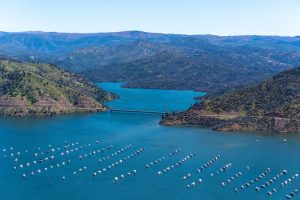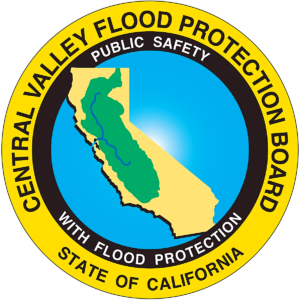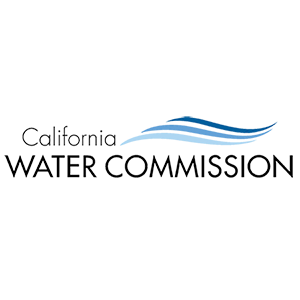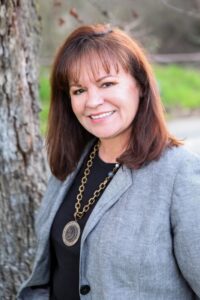 From the Maven’s Notebook
From the Maven’s Notebook
By Christine Souza, Ag Alert
California water officials are taking another step forward as part of a broader process to improve conditions for struggling fish populations in the San Francisco Bay and the Sacramento–San Joaquin Delta and its tributaries. Last week, the California State Water Resources Control Board announced draft updates for the Sacramento River and Delta phase of the state’s water quality control plan, known as the Bay-Delta plan. (more)
 From the Maven’s Notebook
From the Maven’s Notebook
In 1990, Gary Estes moved to Auburn, a town of nearly 14,000 in the Sierra Nevada foothills on the North Fork of the American River. Estes, an environmentalist, immediately joined the fight against Auburn Dam. The proposed dam site was only about one mile from his house. The U.S. Army Corps of Engineers wanted to build Auburn Dam to boost flood control in the city of Sacramento, which is about 30 miles downstream of Auburn and which the Corps considers to be the region most at-risk for catastrophic flooding nationwide. But the American River already had the 340-foot high Folsom Dam between Auburn and Sacramento. (more)
 From the Department of Water Resources; from Maven’s Notebook.
From the Department of Water Resources; from Maven’s Notebook.
For the first time in 100 years, tidal waters are flowing to 3,400 acres of restored habitat that will support fish and wildlife species and provide new flood capacity in Solano County. Today, the Department of Water Resources (DWR) and Ecosystem Investment Partners (EIP) held a levee breaching ceremony to celebrate the completion of the Lookout Slough Tidal Habitat Restoration and Flood Improvement Project (Lookout Slough). This multi-benefit project restores tidal wetland habitat and produces food for Delta smelt and other fish species, while reducing overall flood risk in the Sacramento area. (more)

From the Department of Water Resources
With warm temperatures here to stay in Northern California, runoff into Lake Oroville from snowmelt has significantly dwindled with outflows currently exceeding inflows. The Department of Water Resources (DWR) continues to meet water delivery and environmental requirements while optimizing water storage to allow for carryover storage into next year. Releases from Oroville Dam’s main spillway ceased in May with water being routed through the Hyatt Powerplant for power generation. When the main spillway is not in use, water may still be seen on the main spillway outlet as the seals on the eight radial gates are not designed to be watertight. The gate seals do not play a role in the structural integrity of the gates, which continue to operate as intended. Visitors to Oroville Dam may also notice minor amounts of water flowing from drains built into the emergency spillway. This is normal and expected given the emergency spillway design. The dam and emergency spillway continue to operate as intended. (more)

From CA Dept. of Water Resources/Flood-MAR – Recent cycles of extreme drought and flood, and the passage of the Sustainable Groundwater Management Act (SGMA) provide an enhanced opportunity to strengthen the nexus between flood and groundwater management. The need for using floodwaters for managed aquifer recharge, also known as Flood-MAR , is urgent and must be considered as a crucial part of California’s portfolio of sustainable and resilient water resource management strategies. This approach can be utilized on floodplains and flood bypasses to reduce flood risk and increase groundwater recharge potential, as well as provide ecosystem benefits through restored and reconnected floodplains. (more)
 Agenda items include 2022 Central Valley Flood Protection Plan Update, consideration of adoption of resolutions regarding regulations and rulemaking, Sacramento and San Joaquin Drainage District Assessment District Feasibility Study, Sacramento River Basin, West Sacramento Project – Yolo Bypass East Levee, and Lower Elkhorn Basin Levee Setback Project. There will also be a Board President ceremonial retirement agenda item. Click here for full agenda and remote access instructions.
Agenda items include 2022 Central Valley Flood Protection Plan Update, consideration of adoption of resolutions regarding regulations and rulemaking, Sacramento and San Joaquin Drainage District Assessment District Feasibility Study, Sacramento River Basin, West Sacramento Project – Yolo Bypass East Levee, and Lower Elkhorn Basin Levee Setback Project. There will also be a Board President ceremonial retirement agenda item. Click here for full agenda and remote access instructions.
 From the California Water Commission – The California Water Commission has released a white paper on the State’s role in financing water conveyance projects to meet climate change needs. It includes the potential public benefits of the projects and the implications of various financing options. The white paper will be presented at the commission’s next meeting on June 16. (more)
From the California Water Commission – The California Water Commission has released a white paper on the State’s role in financing water conveyance projects to meet climate change needs. It includes the potential public benefits of the projects and the implications of various financing options. The white paper will be presented at the commission’s next meeting on June 16. (more)
 The Central Valley Flood Protection Board is happy to announce its newest Board member, Mary Jane Griego, was appointed by Governor Newsom on July 7, 2020. Griego has been senior district representative in the Office of Congressman John Garamendi and a member of the Board of Directors of the Olivehurst Public Utility District since 2017. She has been owner of Duke’s Diner since 2012. Griego was a member of the Yuba County Board of Supervisors from 2001 to 2017. Welcome, Mary Jane!
The Central Valley Flood Protection Board is happy to announce its newest Board member, Mary Jane Griego, was appointed by Governor Newsom on July 7, 2020. Griego has been senior district representative in the Office of Congressman John Garamendi and a member of the Board of Directors of the Olivehurst Public Utility District since 2017. She has been owner of Duke’s Diner since 2012. Griego was a member of the Yuba County Board of Supervisors from 2001 to 2017. Welcome, Mary Jane!

Agenda items include an informational briefings on the Yolo Bypass Salmonid Habitat Restoration and Fish Passage (Big Notch) Project, Feather River Levee Setback Area Mitigation Bank, Sacramento and San Joaquin Drainage District Assessment District Feasibility Study, the Board’s response to Groundwater Sustainability Plans (GSP) occurring within the Board’s jurisdiction, and San Joaquin Area Flood Control Agency (SJAFCA) Projects Update. (agenda link).
SSJDD Feasibility Study – Request for Proposal released July 18, 2019
- CVFPB seeks qualified firms to respond to the RFP for the preparation of a Report of Findings evaluating the feasibility of a Sacramento-San Joaquin Drainage District to provide funding for system-wide improvements and the operation and maintenance of associated flood control structures and levees within the State Plan of Flood Control.
- The RFP can be downloaded here https://caleprocure.ca.gov/event/3860/0000013572
 From the Maven’s Notebook
From the Maven’s Notebook

 From the Maven’s Notebook
From the Maven’s Notebook From the Department of Water Resources; from Maven’s Notebook.
From the Department of Water Resources; from Maven’s Notebook.

 Agenda items include 2022 Central Valley Flood Protection Plan Update, consideration of adoption of resolutions regarding regulations and rulemaking, Sacramento and San Joaquin Drainage District Assessment District Feasibility Study, Sacramento River Basin, West Sacramento Project – Yolo Bypass East Levee, and Lower Elkhorn Basin Levee Setback Project. There will also be a Board President ceremonial retirement agenda item.
Agenda items include 2022 Central Valley Flood Protection Plan Update, consideration of adoption of resolutions regarding regulations and rulemaking, Sacramento and San Joaquin Drainage District Assessment District Feasibility Study, Sacramento River Basin, West Sacramento Project – Yolo Bypass East Levee, and Lower Elkhorn Basin Levee Setback Project. There will also be a Board President ceremonial retirement agenda item.  From the California Water Commission – The California Water Commission has released a white paper on the State’s role in financing water conveyance projects to meet climate change needs. It includes the potential public benefits of the projects and the implications of various financing options. The white paper will be presented at the commission’s next meeting on June 16.
From the California Water Commission – The California Water Commission has released a white paper on the State’s role in financing water conveyance projects to meet climate change needs. It includes the potential public benefits of the projects and the implications of various financing options. The white paper will be presented at the commission’s next meeting on June 16.  The Central Valley Flood Protection Board is happy to announce its newest Board member, Mary Jane Griego, was appointed by Governor Newsom on July 7, 2020. Griego has been senior district representative in the Office of Congressman John Garamendi and a member of the Board of Directors of the Olivehurst Public Utility District since 2017. She has been owner of Duke’s Diner since 2012. Griego was a member of the Yuba County Board of Supervisors from 2001 to 2017. Welcome, Mary Jane!
The Central Valley Flood Protection Board is happy to announce its newest Board member, Mary Jane Griego, was appointed by Governor Newsom on July 7, 2020. Griego has been senior district representative in the Office of Congressman John Garamendi and a member of the Board of Directors of the Olivehurst Public Utility District since 2017. She has been owner of Duke’s Diner since 2012. Griego was a member of the Yuba County Board of Supervisors from 2001 to 2017. Welcome, Mary Jane!